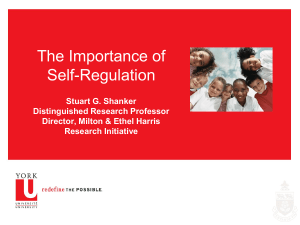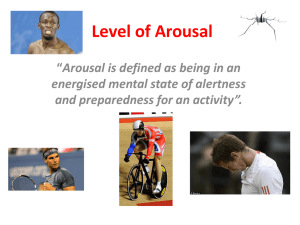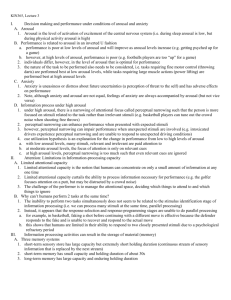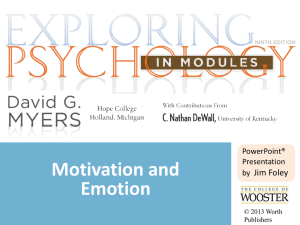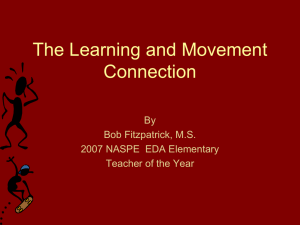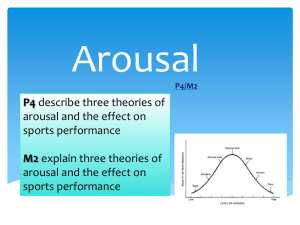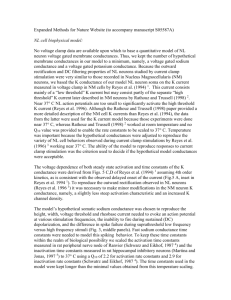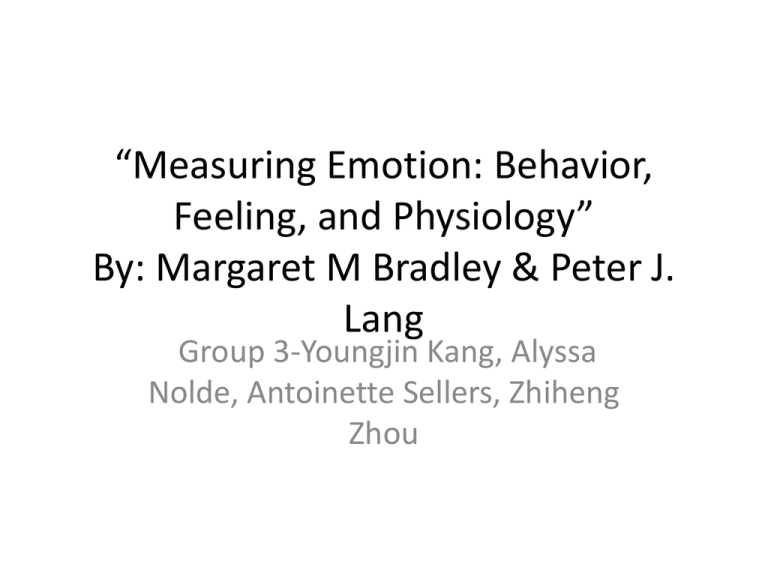
“Measuring Emotion: Behavior,
Feeling, and Physiology”
By: Margaret M Bradley & Peter J.
Lang
Group 3-Youngjin Kang, Alyssa
Nolde, Antoinette Sellers, Zhiheng
Zhou
Why do the authors focus on specific
muscles? Why do they matter?
• Responses of facial muscles help to
characterize how emotions are expresses
physiologically.
• Studying specific muscles like the zygomatic
muscle provides information to researchers
about how physiological responses
accompany perceptions of arousal and affect
of stimuli
Figure 11.6
• Patterns of physiological
response
• Shows that:
– Facial corrugator EMG activity
(top) left) and heart rate (top
right) vary as function of
picture valence
• Ex. Strong contraction of the
corrugator muscle when a
picture is rated as unpleasant
– Skin conductance activity
(bottom left) and cortical
evoked potentials (bottom
right) vary with picture
arousal
• Ex. As arousal increased, skin
conductance increased
Figure 11.7
• Figure 11.7 shows the correlation
between individula’s affective
judgments of pleasure and
arousal with with their
physiological and behavioral
response
• Corrugator EMG, zygomatic, and
heart rate vary with differences in
rates pleasure
– Ex. Zygomatic activity increases as
the pleasantness of the stimuli
increases
• Skin conductance, cortical evoked
potentials, and viewing time vary
with arousal ratings
– Cortical activity increases as
arousal increases
What does heart rate measure?
• Triphasic pattern of heart rate response
– Initial deceleration (unpleasant)
– Followed acceleration (unpleasant)
– Secondary deceleration
Electrocardiogram
Heart rate monitor
What does skin conductance
measure?
• Skin conductance, also known as galvanic skin response (GSR),
reflects activation of the autonomic nervous system by
measuring the electrodermal activity
• Indexation of arousal
Event related potentials and slow wave activity?
Brain Activities Processing Emotional Pictures
Coronal Plane
of
Occipital Lobe
•
Lang, P. J., Bradley, M.
M., Fitzsimmons, J. R.,
Cuthbert, B. N., Scott, J.
D., Moulder, B., &
Nangia, V. (1998).
Emotional arousal and
activation of the visual
cortex: An fMRI analysis.
Psychophysiology, 35(2),
199-210.
• Overlapping areas General visual processing (Calcarine fissure + Brodmann ‘s
area 18) (Lang, et al., 1998).
• Emotional Stimuli
1. More overall activation with emotional pictures.
2. Right occipital gyrus activation with only emotional pictures (Lang, et al., 1998).
Discuss how these measures can yield meaningful patterns and
examples of analyses leading to them.
Sex Differences of Brain activity with Emotional Pictures
• Main Effect
More right posterior activation
with emotional pictures
regardless of sex (Lang, et al.,
1998).
• Interaction Effect
1. More right posterior
activation of unpleasant
stimuli for female
participant's.
2. More right posterior
activation of pleasant stimuli
for male participants
(Lang., et al., 1998).
Lang, P. J., Bradley, M. M., Fitzsimmons, J. R., Cuthbert, B.
N., Scott, J. D., Moulder, B., & Nangia, V. (1998). Emotional
arousal and activation of the visual cortex: An fMRI
analysis. Psychophysiology, 35(2), 199-210.

